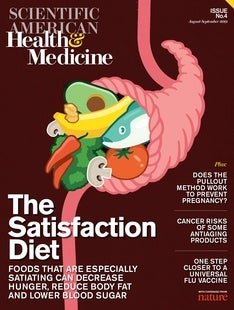
- Four servings of whole fruits.
- Four servings of whole vegetables.
- Five servings of high-fiber whole grains.
- Lean protein (4 ounces of fish, meat, or poultry, for example) per meal.
The satisfaction diet is close to the plant-based, no refined foods diet I recommend.
Both are simple, do not fuzz with calorie counting (a waste of time) and acknowledge diets need to keep people full and happy. Eating is a very psychological and social activity; it must be fun. People on spartan, starving, complicated diets do not stay with them for very long. I recommend lean meats just so that patients stay away from refined sugars and processed foods.
However, there are three caveats to the satisfaction diet:
One, too many fruits and grains for diabetics. Two, meat diets are not environmentally sustainable (UN report August 2019) and more likely to increase the risk of chronic illness (The China Study). And three, “satisfaction” can be a very subjective concept. Our Satiety center in the hypothalamus is influenced by many factors, including messages from our gut. Someone addicted to refined sugars will not be “satisfied” until they eat garbage.
The Satisfaction diet reflects the abandonment of the old dictum “calories in, calories out.” It never considered the role of the microbiome in determining how we metabolize the food we eat nor the satiety or food addiction signals it sends to the brain (the Brain-Gut connection). For a more tailored approach to a diet, I recommend testing our gut flora. VIOME is to determine what foods you should be eating/avoiding. GI MAP tests what species of bacteria you have, some of which (or the lack thereof) promote obesity.


